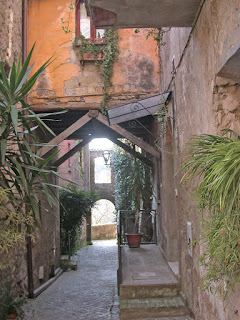Enzo Biagi - author and journalist
Much respected presenter taken off air by Berlusconi
Enzo Biagi, the distinguished print and television journalist and author of more than 80 books, died in Milan on this day in 2007, at the age of 87. A staunch defender of the freedom of the press, Biagi himself was the victim of censorship from the highest level of the Italian government in 2002 when prime minister Silvio Berlusconi effectively sacked him from the public broadcaster RAI for what he called "criminal use" of the network. In what became known as il Editto bulgaro - the Bulgarian Edict - because he made the pronouncement during a state visit to Sofia, Berlusconi named another journalist, Michele Santoro, and the satirical comedian, Daniele Luttazzi, as guilty of similar conduct and said it was his duty to "not to allow this to happen". It meant that the last years of Biagi's life were marred somewhat by an absence from the screen that lasted five years. He made an emotional comeback in April 2007, seven months before his death, when Romani Prodi had begun his second stint as PM and saw to it that he was reinstated. Berlusconi's disapproval of Biagi was thought to have related to two interviews he conducted during the run-up to the 2001 elections. Read more…
____________________________________________________________
Giovanni Buitoni - entrepreneur
Turned family business into multinational company
Giovanni Buitoni, the entrepreneur who turned Buitoni pasta and Perugina chocolates into the international brands they are today, was born on this day in 1891 in Perugia. The Buitoni family had been making pasta since 1827, when Giovanni’s great grandmother, Giulia, opened a small shop in the Tuscan town of Sansepolcro, in order to support the family after her husband, Giovan Battista Buitoni, had become ill. She had her own recipe for pasta that used only high quality durum wheat. Giulia had pawned her wedding jewellery in order to set up the shop but the business did so well that in 1856 two of the couple’s nine children, Giuseppe and Giovanni, opened a factory in Città di Castello, just over the border in northern Umbria, to manufacture pasta using a hard durum wheat they sourced in Puglia. Giovanni’s sons, Antonio and Francesco, continued the company’s expansion, founding manufacturing plants in other towns, including Perugia. It was in Perugia in 1907 that Francesco, noting the increasing popularity of chocolate, joined with several partners in launching the Perugina confectionary company. Giovanni junior’s destiny was probably always to have a role in the family business, although it came rather sooner than he expected. Read more…
__________________________________________________________
Cesare Lombroso – criminologist
Professor who first encouraged study of criminal mind
Cesare Lombroso, a university professor often referred to as ‘the father of criminology’ was born on this day in 1835 in Verona. Although many of his views are no longer held to be correct, he was the first to establish the validity of scientific study of the criminal mind, paving the way for a generation of psychiatrists and psychologists to create a greater understanding of criminal behaviour. In broad terms, Lombroso's theory was that criminals could be distinguished from law-abiding people by multiple physical characteristics, which he contended were throwbacks to primitive, even subhuman ancestors, which brought with them throwbacks to primitive behaviour that went against the rules and expectations of modern civilized society. Through years of postmortem examinations and comparative studies of criminals, the mentally disturbed and normal non-criminal individuals, Lombroso formed the belief that ‘born criminals’ could be identified by such features as the angle of their forehead, the size of their ears, a lack of symmetry in the face or even arms of excessive length. Read more…
___________________________________________________________
Vino Novello
Raise a glass to autumn in Italy
Italy’s new wine from this year’s harvest - Vino Novello - goes on sale in the shops and will be served in bars and restaurants from around today. The light, fruity, red wine, produced throughout Italy from different grape varieties, is enjoyable to drink and a bargain buy to take home with you. Vino Novello is often similar in taste, body and colour to the French wine, Beaujolais Nouveau, which is exported to a number of other countries after its release in the third week of November. Like Beaujolais Nouveau, Vino Novello has a low alcohol content and is meant to be drunk while it is still young. The wine should be consumed quickly after the bottle is opened and unopened bottles should be kept for only a few months. In some parts of Italy there is a tradition that the last days to drink it are i giorni della merla (the days of the blackbird), which are traditionally the coldest days at the end of January. A major area for production is the Veneto, with the merlot grape being the one most used by wine makers to make Vino Novello. Many wine producing areas hold feste to celebrate and will serve local specialities to eat with the new wine. Read more…































